Excel 2013 -
Finalizing and Protecting Workbooks

Excel 2013
Finalizing and Protecting Workbooks


/en/excel2013/track-changes-and-comments/content/
Before sharing a workbook, you'll want to make sure it doesn't include any spelling errors or information you want to keep private. Fortunately, Excel includes several tools to help finalize and protect your workbook, including Spell Check and the Document Inspector
Optional: Download our practice workbook.
 Clicking the Spelling command
Clicking the Spelling command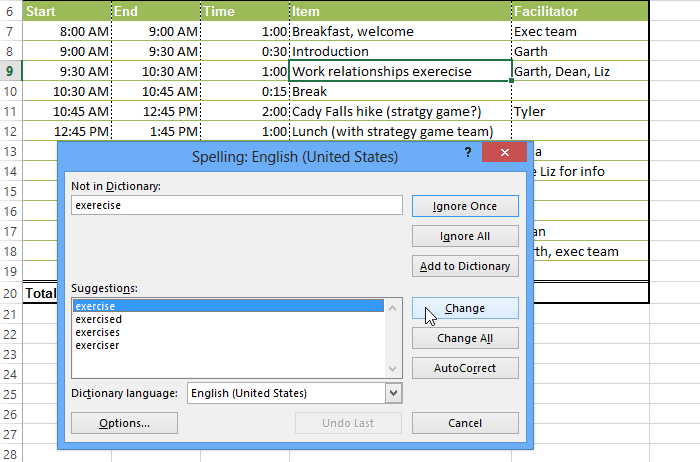 Using Spell Check to correct spelling errors
Using Spell Check to correct spelling errors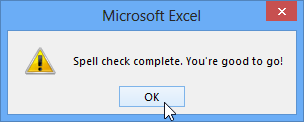 Closing Spell Check
Closing Spell CheckIf there are no appropriate suggestions, you can also enter the correct spelling manually.
Spell Check isn't always correct. It will sometimes mark certain words as incorrect, even if they're spelled correctly. This often happens with names, which may not be in the dictionary. You can choose not to change a spelling "error" using one of three options:
Whenever you create or edit a workbook, certain personal information may be added to the file automatically. You can use the Document Inspector to remove this kind of information before sharing a workbook with others.
Because some changes may be permanent, it's a good idea to save an additional copy of your workbook before using the Document Inspector to remove information.
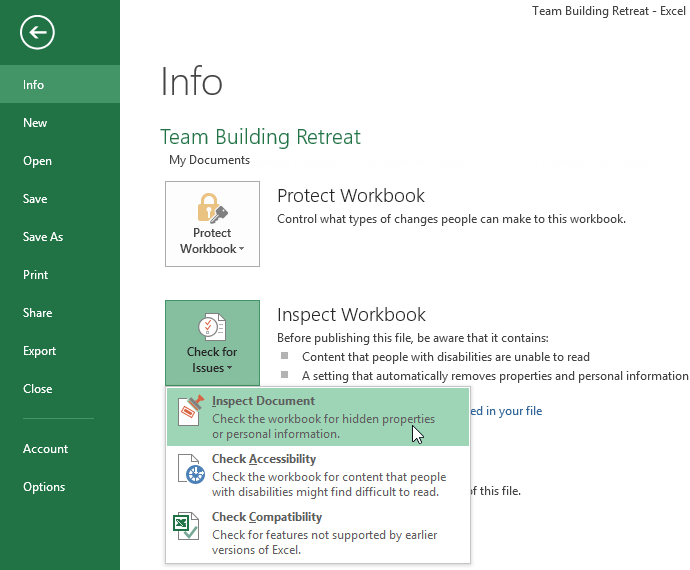 Clicking Inspect Document
Clicking Inspect Document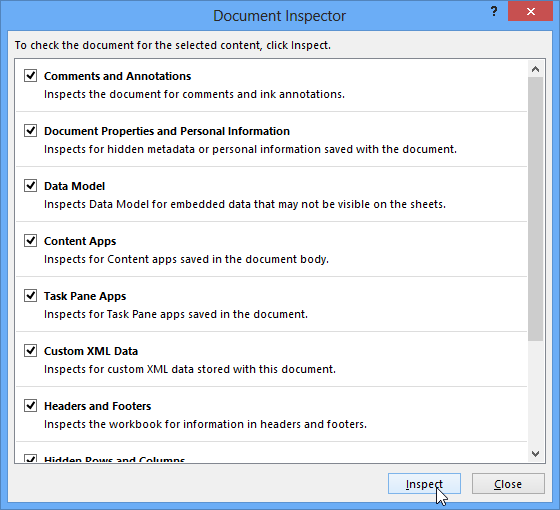 Inspecting the workbook
Inspecting the workbook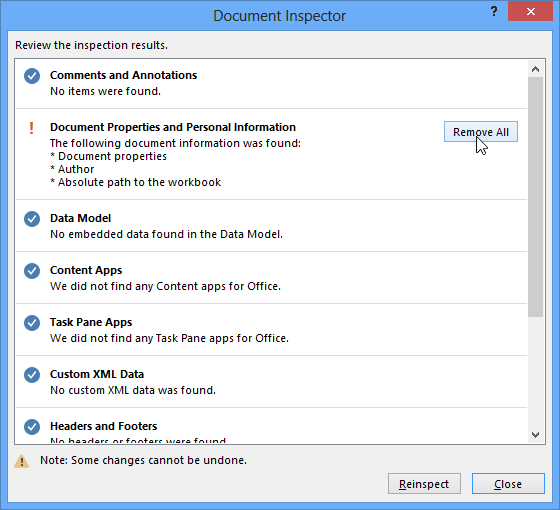 Removing personal information from the workbook
Removing personal information from the workbook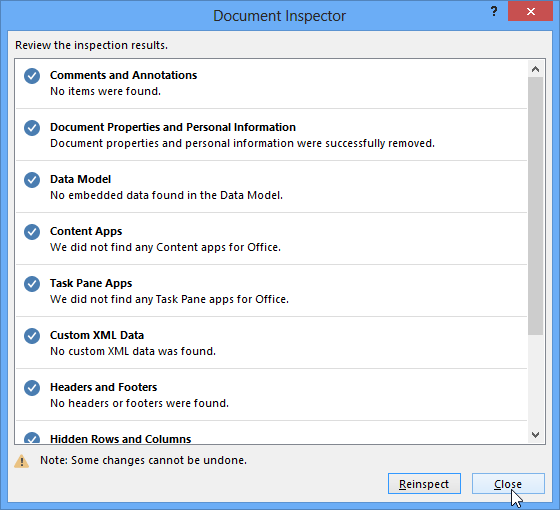 Closing the Document Inspector
Closing the Document InspectorBy default, anyone with access to your workbook will be able to open, copy, and edit its content unless you protect it. There are many different ways to protect a workbook, depending on your needs.
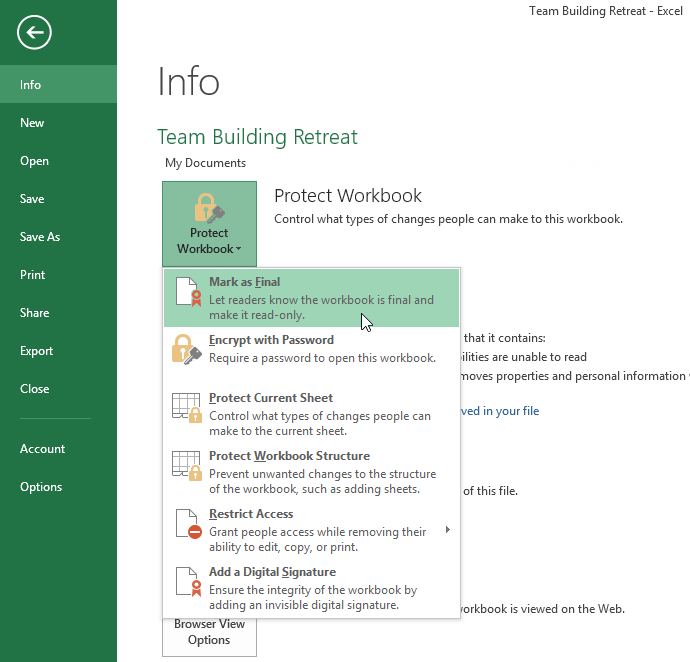 Selecting Mark as Final
Selecting Mark as Final Clicking OK to save the workbook
Clicking OK to save the workbook Clicking OK
Clicking OK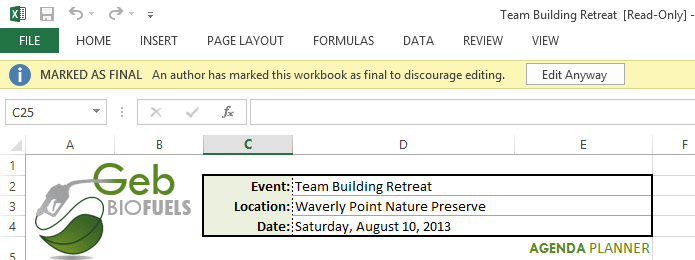 A workbook marked as final
A workbook marked as finalMarking a workbook as final will not prevent someone from editing it. If you want to prevent people from editing it, you can use the Restrict Access option instead.
/en/excel2013/conditional-formatting/content/